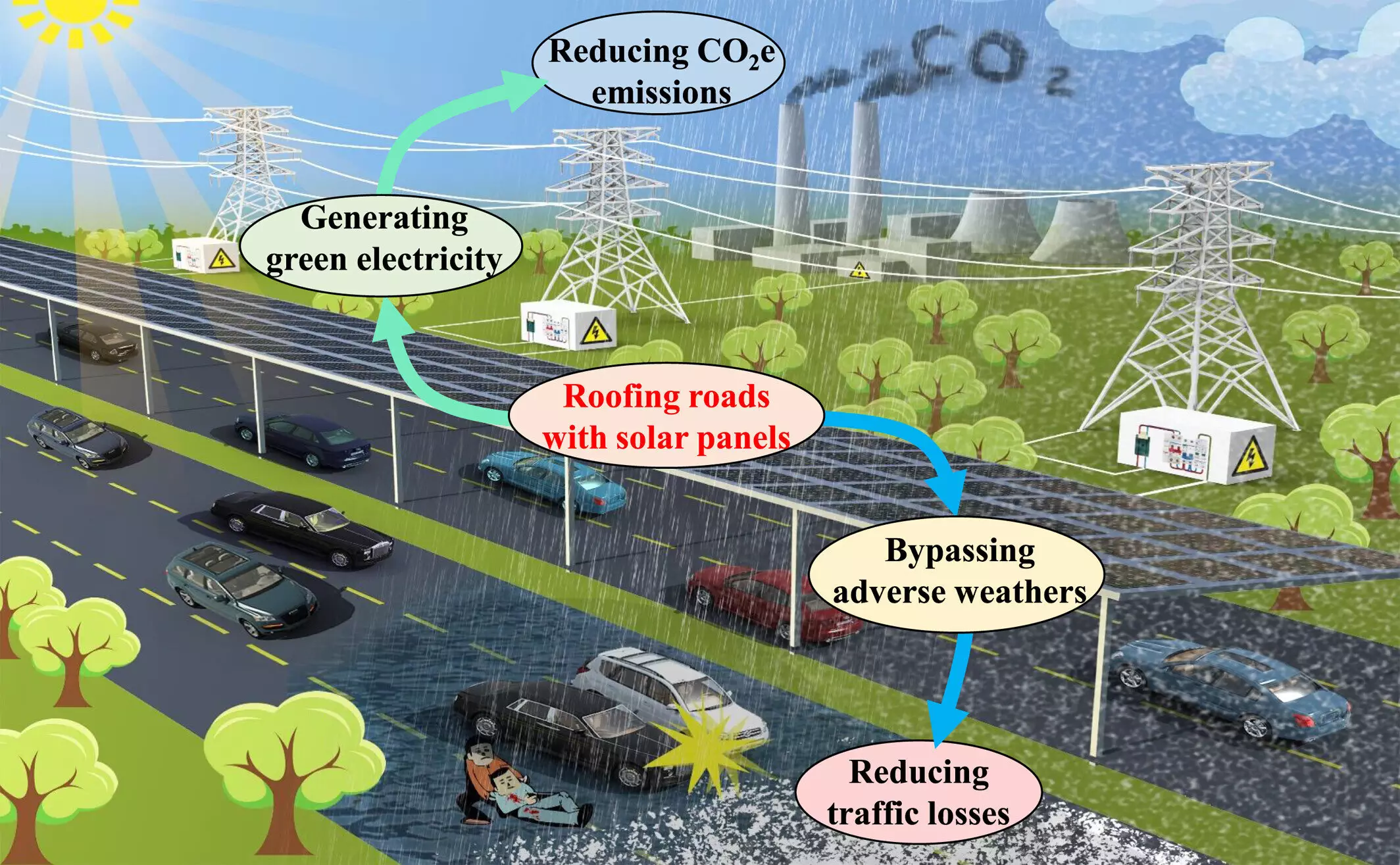In an era where climate change looms as an unprecedented threat, innovative solutions to combat carbon emissions have become paramount. A recent study has proposed a groundbreaking initiative that could reshape not only our infrastructure but also our relationship with energy consumption: the installation of solar panel roofs over highways. This concept envisions converting our expansive network of highways into enormous solar energy generators, with the potential to reduce global carbon emissions by an astonishing 28%.
Led by Ling Yao, a prominent remote sensing scientist, this ambitious study published in Earth’s Future offers a theoretical framework that combines renewable energy with existing infrastructure. By harnessing the nearly 3.2 million kilometers of highways blanketing the Earth, it presents a unique strategy that has largely gone untapped. The research suggests such roofs could generate approximately 17.58 petawatt-hours of electricity annually, which would account for more than 60% of the world’s electricity requirements as of 2023.
Yao’s vision was born from a mundane moment during his evening commute, where a sudden epiphany struck him as he gazed down at the roads: highways could serve a dual purpose as energy-generating surfaces. This revelation invites us to reconsider how we perceive transportation infrastructure. Why merely allow roads to facilitate travel when they could also be pivotal in addressing our energy challenges?
The concept of solar roofs over highways isn’t entirely novel; there have been small pilot programs implemented in various countries. However, these have yet to achieve the scale proposed in Yao’s research. As the cost of solar technology continues to decline, the timing may be ripe for exploring more extensive implementations of this innovative idea.
The economic landscape surrounding the installation of solar panels atop highways presents both monumental opportunities and significant challenges. It is estimated that creating this network would require up to 52.3 billion solar panels. While such an initiative promises to offset 9.66 gigatons of carbon dioxide emissions per year—nearly two-thirds of the greenhouse gases emitted in the United States in 2022—the socioeconomic ramifications cannot be overlooked.
On one hand, this venture could provide numerous jobs in areas ranging from manufacturing to maintenance, thus stimulating local economies. Conversely, the initial investment is projected to be substantial; costs could potentially be four times higher than equivalent ground-based solar arrays. Moreover, practical issues such as maintenance and cleaning methods for billions of solar panels must be comprehensively addressed.
Beyond their potential to generate electricity, solar roofs may offer another unexpected benefit: improved road safety. The study indicates that implementing these solar installations could reduce traffic-related fatalities by an estimated 10.8%. By providing protection from adverse weather conditions, such as rain and snow, these roofs could contribute to safer driving experiences, particularly in regions prone to inclement weather.
Reducing the frequency and severity of accidents has profound implications not only for public safety but also for economic costs associated with traffic collisions. Thus, by merging energy production with road safety enhancements, this concept suggests a multifaceted approach to urban development.
Despite the allure of this futuristic vision, the journey toward implementing solar roads involves navigating a plethora of hurdles. Regulatory standards, funding challenges, and public acceptance are paramount in overcoming skepticism regarding solar highways.
Yao’s research opens a dialogue about the potential viability of such projects, but the success of these concepts will rely heavily on pilot programs as proof of concept. Long stretches of solar rooftops in large populations centers such as eastern China or western Europe may be the first steps toward realizing this vision. Ultimately, practical implementations will provide a clearer picture of the feasibility and impact of solar-powered roads.
While the notion of solar panel roofs over highways may sound ambitious, the potential benefits are manifold. If realized, this initiative could play a crucial role in global efforts to drastically cut carbon emissions, lead the transition toward sustainable energy, and improve traffic safety. As communities and governments look for actionable strategies to combat climate change, the roads themselves might just pave the way to a cleaner, safer, and more sustainable future.


Leave a Reply